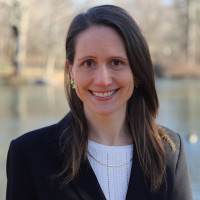-
Comments to EPA on TSCA Chemicals Regulation
The Environmental Protection Agency (EPA) is proposing to regulate four chemicals that have serious environmental and health risks. We submitted comments supporting EPA and suggesting ways the agency can strengthen its proposal and, additionally, urging EPA to reexamine its decision not to regulate a fifth chemical.
-
Comments to EPA on Coal Combustion Residuals Rule
The Environmental Protection Agency (EPA) recently proposed to significantly weaken requirements for the disposal of coal combustion residuals from coal-fired power plants. We submitted comments focusing on inadequacies in EPA’s assessment of the rule’s costs and benefits.
-
Court Strikes Down Rule Refusing to Limit Cross-State Air Pollution
The U.S. Court of Appeals for the D.C. Circuit vacated EPA’s Close-Out Rule, which allowed upwind states to continue emitting ground-level ozone pollution that significantly contributes to downwind air quality problems. The agency justified the rule by falling back on its analysis from the Cross-State Update, a prior rule that had provided only a partial remedy to interstate emissions. We filed an amicus brief, which argued that EPA fundamentally misunderstood its job in analyzing and choosing between cost-effective options.
-
Court Upholds 2015 Ozone Standards
A federal appeals court recently rejected industry and state challenges to a set of Obama-era air quality standards, which the Institute for Policy Integrity had filed an amicus brief defending. In 2015, the Environmental Protection Agency (EPA) strengthened National Ambient Air Quality Standards (NAAQS) for ground-level ozone, the primary ingredient in urban smog and the source of a variety of respiratory ills. The coal mining company Murray Energy Corporation, along with trade associations and several state attorneys general, brought suit in the U.S. Court of Appeals for the D.C. Circuit, arguing that the new standards were unnecessarily stringent and impossible to achieve. We filed an amicus brief in support of the standards.
-
Comments to EPA on New York’s Clean Air Act Petition
The Environmental Protection Agency (EPA) proposed to deny New York’s Clean Air Act Section 126 Petition seeking reductions in pollution from upwind sources that significantly impede the state’s attainment of ozone pollution standards. We submitted comments explaining how EPA’s justification for the decision is flawed.
-
Expert Report on Colorado’s Zero Emission Vehicle Program
Peter Howard and Jason Schwartz provided an expert report on Colorado’s Zero Emission Vehicle program, which will reduce millions of tons of greenhouse gas emissions annually. They demonstrate how the program’s climate benefits can be monetized and how those estimates can provide useful context for decisionmakers and the public.
-
EPA Science Advisory Board Input
As part of EPA’s June 5-6 meeting of the Chartered Science Advisory Board (SAB), we submitted both oral and written input on several issues, including the Clean Water Rule, power-sector emissions of air toxics, vehicle emissions standards, and the Science Transparency Rule.
-
Additional Comments to EPA and NHTSA on Vehicle Emissions Standards Economic Analysis
The Environmental Protection Agency (EPA) and the National Highway Traffic Safety Administration (NHTSA) are proposing to weaken key fuel economy and greenhouse gas emissions standards for future vehicle models. In October, we highlighted our concerns with some of the economic analysis supporting the proposal. The Alliance of Automobile Manufacturers submitted comments that included economic analysis supporting the proposed rule prepared by NERA Economic Consulting and Trinity Consultants. In December, we wrote supplemental comments rebutting NERA and Trinity’s analysis, identifying serious flaws and unexplained departures from longstanding practices. NERA recently responded.
Our latest comments detail how NERA’s response does not address many of the problems we previously discussed. As our comments explain, the analysis relies on unreliable modeling and methodologies, for which NERA still has not provided critical details. NERA also misstates or fails to respond to our points on a number of topics, such as scrappage and fuel savings benefits. We point out the shortcomings in NERA’s response and provide more detail on each of the topics.
-
Reply Comments to the FCC on Mitigating Space Debris
The Federal Communications Commission (FCC) called for input on possible market-based approaches to regulating orbital debris, like small but dangerous fragments from the launch, operation, and disintegration of satellites. We previously submitted comments that included an initial discussion of what the FCC might consider in choosing a market-based regulation. Our reply comments expand on this discussion, outlining specific steps the FCC can take to assess implementing a market-based solution.
-
Amicus Brief on Interstate Air Pollution
The Environmental Protection Agency (EPA) recently finalized the “Close-Out Rule,” a rule refusing to impose any additional reductions in interstate ozone air pollution under the Good Neighbor Provision of the Clean Air Act. We submitted an amicus brief to the U.S. Court of Appeals for the D.C. Circuit explaining how EPA’s decision to not require pollution reductions is irrational and devoid of adequate analysis.
Viewing recent projects in Environmental Health






